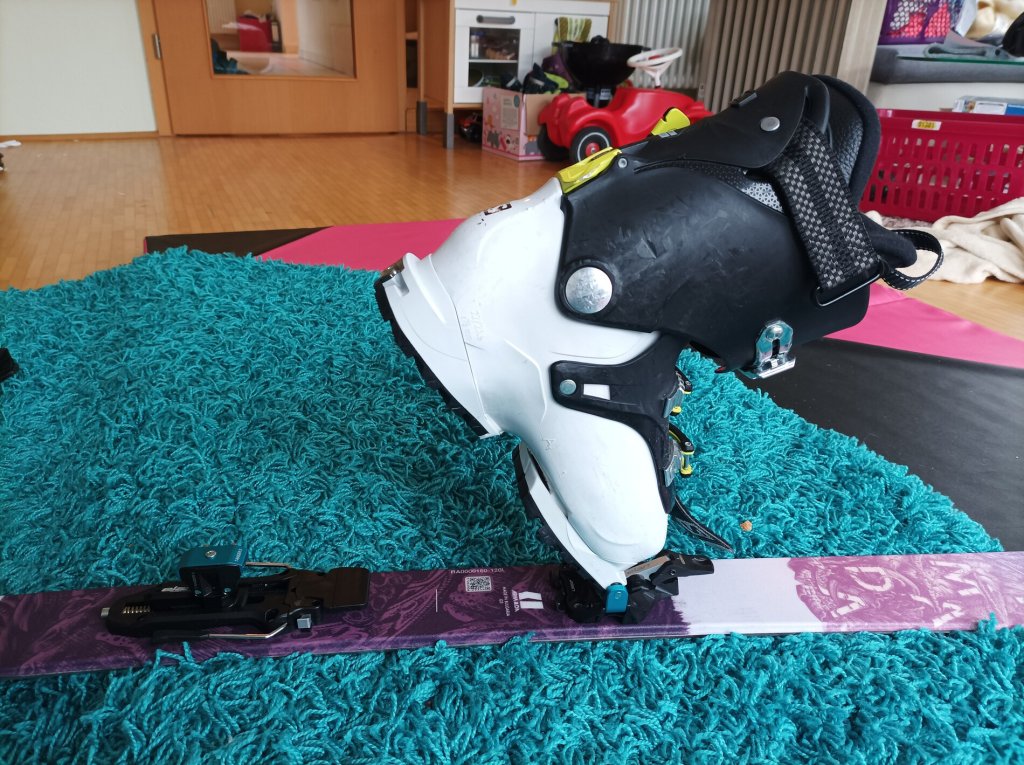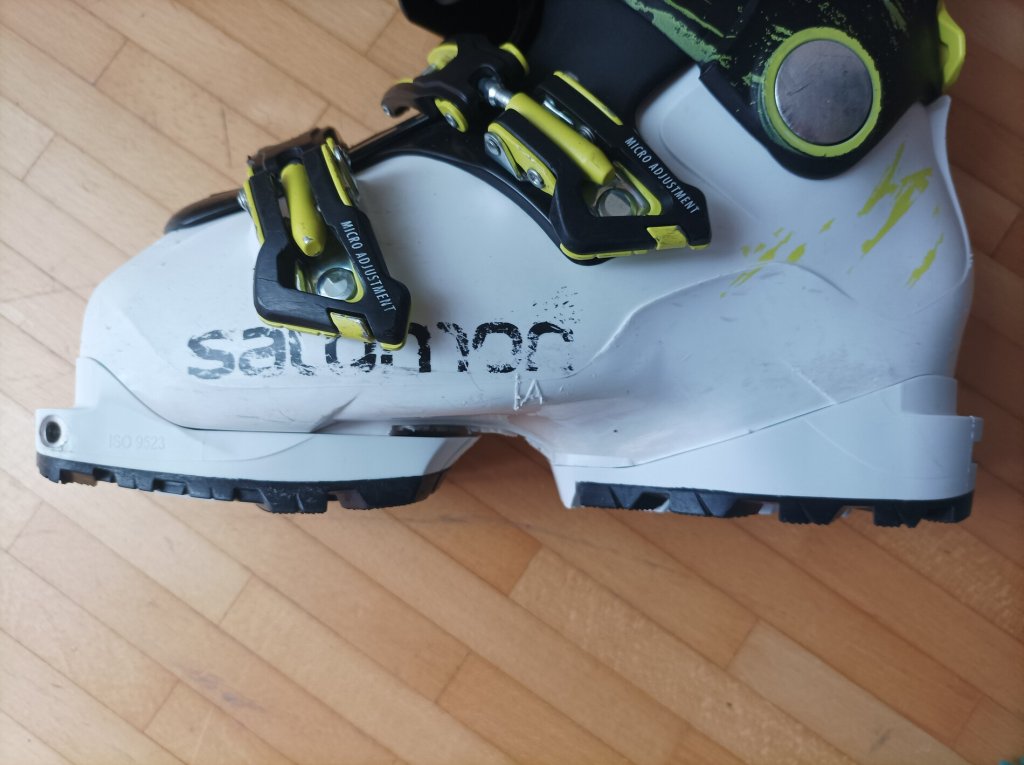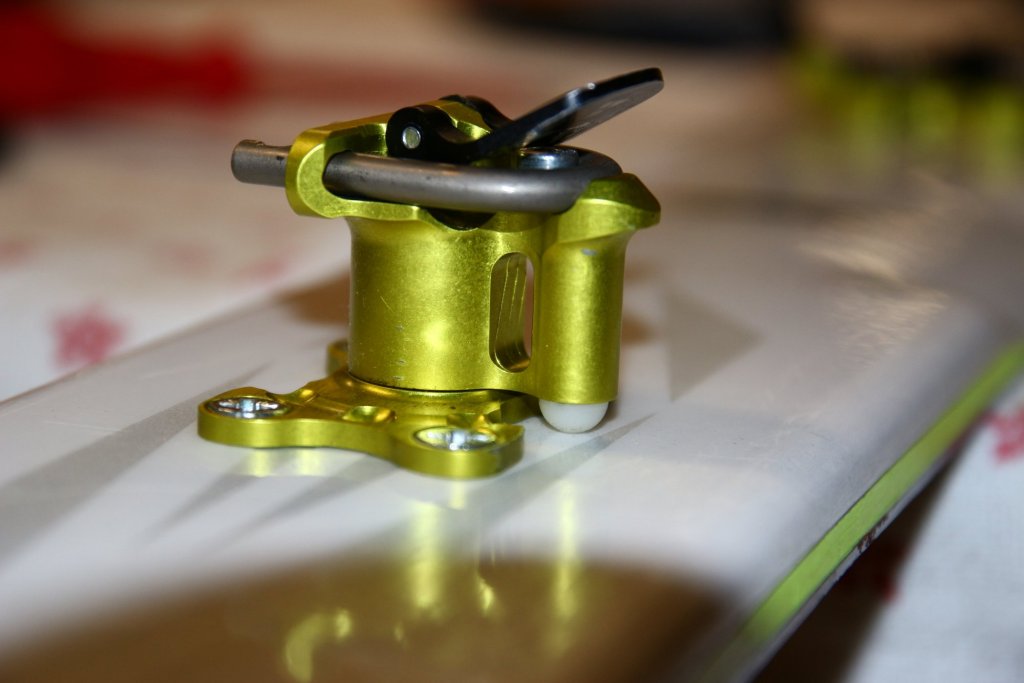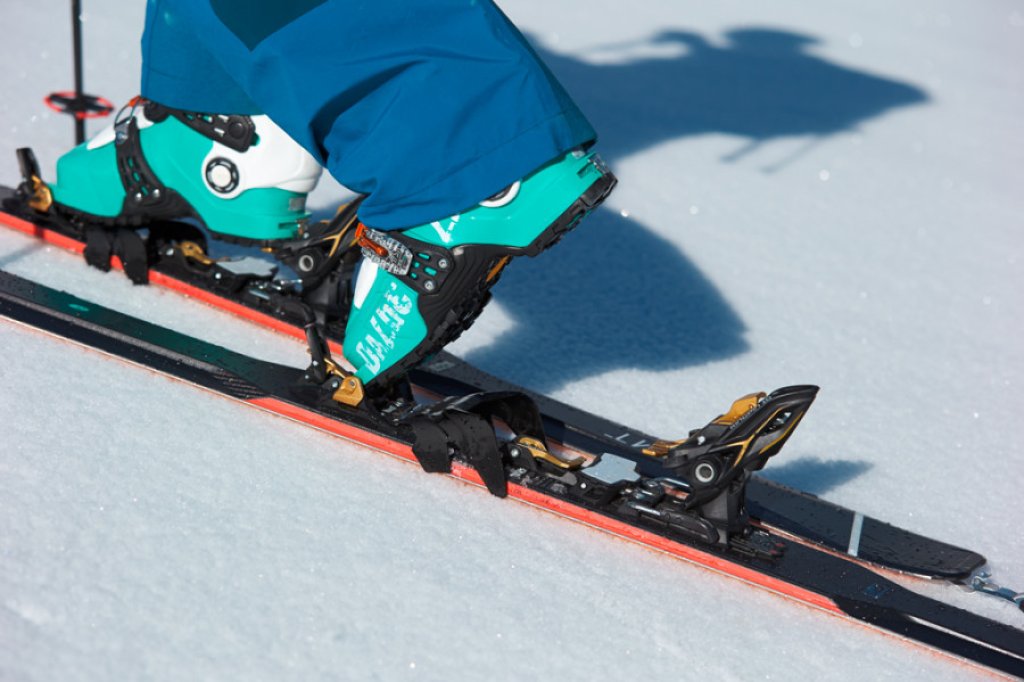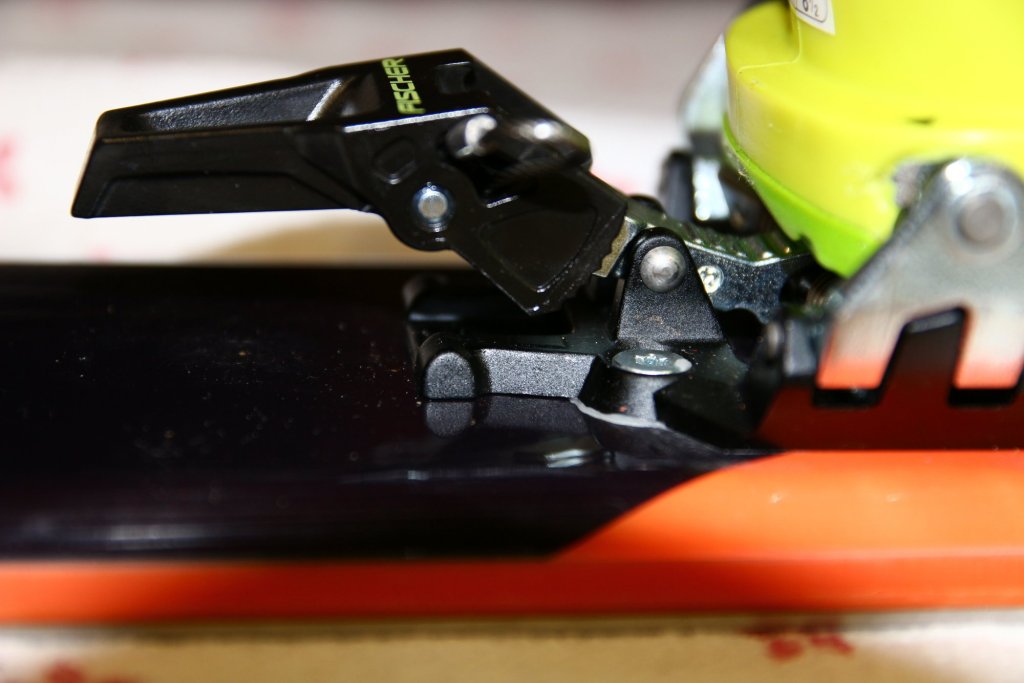Test conditions
The entire season was tested, exclusively in the Black Forest and exclusively off-piste. The reasons for this have already been described. Anyone who read the countless ConditionsReports from the Black Forest here on PowderGuide last season will know that the conditions were varied. From spring-like soft to wind-pressed to Badish Columbia Pow, everything was there. And so the youngsters were able to test the bindings extensively in a rollercoaster of weather conditions.
The material - hard facts
The bindings couldn't be more different. There are differences in weight, handling and, of course, price.
Hagan Z02 Junior
The Hagan has a range of sole lengths between 225 and 280 mm in the XS version. This was one of the main reasons for the binding, as the ski boot length of child 1 is exactly at the lower end of the scale. The Z-value ranges from 2-7, which is also a reason to buy the binding for a six-year-old lightweight. Most bindings on the market can be turned down to a minimum Z-value of 3 at most and are designed for lightweight adults. However, young touring skiers often need a setting range between 2 and 2.5. The weight is specified as 740g/piece without stoppers and 940g/piece including stoppers. In ascent mode, the climbing aid lever can be set at 10° and 15° in two positions. The third position (5°) results when the climbing aid lever is laid flat to the rear and the step frame rests on the locking lever.
It is important to know that the bindings may only be used with alpine ski boots in accordance with ISO standard 5355 type A and with touring ski boots in accordance with ISO standard 9523! Children's boots must not be used!
The Hagan Z02 Junior is more or less a touring frame binding like those found on adults, but for kids. It works accordingly. Anyone who knows how a frame binding for adults works will quickly get to grips with the Hagan. The frame binding also makes it easy for children to get on, as it basically works in the same way as classic alpine bindings. Using the climbing aid is also easy to learn and works well. We left out the stoppers, which led to the odd rescue jump when getting in and out unsupervised, so that the skis didn't accidentally shoot off into strictly protected grouse territories.
The first few meters were made in a parking lot, but then we quickly made our way up the first slope. The relatively high standing height ensures that the inexperienced touring novice stands unaccustomedly wobbly on the skis during the ascent. Without the ski poles as support, there would probably have been significantly more snow contact on the ascent than there already was. If you insert the first or even second step of the climbing aid, the child-ski system becomes even more destabilized.
The conversion is simple and can also be done quickly by children. However, as with most frame bindings, snow can sometimes get stuck in the binding, so a final check is not a bad idea. From time to time you have to tap, shake or help with the ski pole to make sure everything clicks into place properly. However, there were no problems with icing or anything similar and so the skis were quickly ready for the descent.
Of course, it is difficult to judge the downhill performance if you haven't skied yourself. However, it was noticeable that the acclimatization phase downhill was significantly shorter than on the rather shaky ascent. Of course, we already had the routine from previous years, but I was still surprised that there were no problems downhill with the new skis or bindings. And this despite the fact that we were only skiing off-piste. The feedback from the test person on the descent was therefore consistently positive.
Contour Adapter
The adapter is easy to explain. It turns any alpine ski setup into a touring ski. The adapter is simply clicked into the alpine binding and has a movable joint at the front so that the heel can be lifted while walking. The ski boot is clamped in like a crampon. The sole length is adjustable from 245mm - 305mm and can be used with any boot. It is probably the simplest and cheapest option for ski touring with children. An old skin that was no longer in use was cut to size. The weight of the adapter alone is 900 g per pair. The adapter can be easily adjusted to the sole length without tools. The fold-out climbing aid makes it easier for the child to cope with steeper slopes. Cost: 99.90 for the adapter.
































